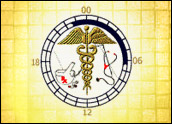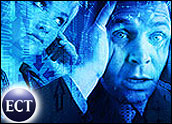
At Blue Cross-Blue Shield of Rhode Island (BCBSRI), the numbers told the story: About 180 customer-service reps were using old “green screen” technology. With dumb terminals connected to a claims-processing system, trying to handle a total of 900,000 calls per year.
Each call took about 10 minutes, and customers were kept on hold while reps navigated through as many as 30 screens. Low call-resolution rates added up to steep costs for this US$2 billion insurer covering 680,000 people in Rhode Island.
When it came time to improve its call management, BCBSRI launched its first truly integrated CRM application.
David Zink, CIO and senior vice president for administration at the company, followed a trusted, time-sensitive plan. He hired Watch Hill Partners (now known as MasterCard Advisors) as a consultant, then created a scope document and narrowed the selection to four vendors before choosing Pegasystems.
Known Quantity
The final decision to use Pegasystems stemmed in part from the company’s knowledge of the healthcare industry. Pegasystems already had developed more than 30 workflows for BCBS’s sister company in Massachusetts.
“By choosing the same vendor, we had the benefit of a jump-start,” Zink told CRM Buyer, adding that BCBSRI also chose the PegaHEALTH Member Services and Provider Service modules.
Keeping healthcare affordable requires good cost management. Zink found himself asking: “How could we streamline our operations, improve operating costs and impact affordability? What could we transform in our company to do better? How could we refocus efforts to core competencies instead of back-office commodity efforts?”
Tight Schedule
For various reasons, there was only a five-month window of opportunity to implement the CRM project. Faced with this challenge, Zink asked himself, “What would be the secret to doing this?” Conventional wisdom on successful CRM implementations usually advises allowing ample time to launch and follow a series of guidelines aimed at success.
Zink boiled those guidelines down to just two:
1. Put it in “vanilla.” Don’t allow users to change it. Just put it in and change it later. According to Zink, this was tough to do, but with a good collaborative environment at the company, its customer-service departments agreed to do it.
2. Pegasystems advised Zink to have an officer-level person sponsor the project, so no one could change its scope and any obstacles could be run down. Zink outsourced this portion of the project management to Watch Hill.
Holding fast to a tight schedule allowed no room for project creep. Because he was unable to take employees away from their daily jobs, Zink structured training for 180 reps over a two-month period in off-hours, by rotating shifts and on Saturdays.
Moreover, when Zink found out the project was three days behind schedule, he called the president of Pegasystems to get it back on track. Three days is a minuscule loss of time on most CRM projects, but with the five-month window, Zink took it seriously. Pegasystems brought in extra resources, and the job was done on schedule and under budget.
Positive ROI
While it is still too early to quantify the full impact of this CRM rollout, at a cost of less than $5 million, improvements already can be measured. Stephanie Ledoux, BCBSRI’s assistant vice president of customer service, reports call-handling times have dropped about 5.7 percent in the company’s PPO business and 26 percent in its HMO business.
“We’ve reduced our new-hire training time, from a system navigation perspective, from 10 weeks to 8 weeks,” she told CRM Buyer.
BCBSRI also sees significant improvement in “first call” resolution, although it has not fully completed analysis. A Roper survey of its customer satisfaction level put that metric at 98 percent.
From Workflows to Efficiency
In the end, what matters is this: The 30 different CRT screens of yesteryear have been replaced by automated workflows prebuilt into the applications, allowing customer-service reps (CSRs) to view information from a back-end legacy system and address inquiries from members about such issues as healthcare benefits, claims and membership-eligibility questions.
The workflows guide the CSR through the process, reducing upfront training time for new hires. “In addition,” Ledoux said, “we have an audit trail of all contacts made by members and providers to our corporation in one central repository, which helps reduce duplication of effort.”
BCBSRI also built a computer telephony interface between its phone switch and the CRM application, which prepopulates information about the member-provider for the CSR. The screen-pop technology enables a smooth transition into the call by pulling policy information to the screen for the CSRs.
More importantly, with this increased efficiency, Zink said that BCBSRI is now able to change the role of the customer-service department and turn these people into more consulting advisors.
“The reason people call customer service is usually a complaint. By managing that first-call resolution quickly and being able to offer more help, we act as a conduit to other capabilities in the healthcare system,” Zink said. “That’s why customer satisfaction jumped as we grew the department to a solution provider, not just a complaint department.”
Zink added that he looks forward to the upcoming rollout of the Provider-Service phase.
“In the next couple years, as we roll out technology, we will further improve affordability and improve customer satisfaction with a significant cost savings,” he concluded.



































